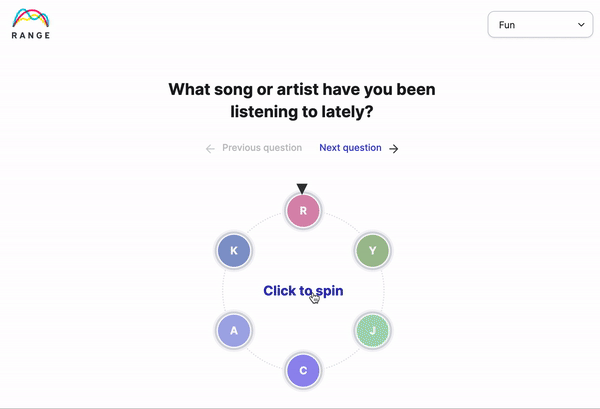
The World Health Organization officially recognized “burnout” as a chronic medical condition, defining “QD85” as follows:
Burn-out is a syndrome conceptualized as resulting from chronic workplace stress that has not been successfully managed. It is characterized by three dimensions: 1) feelings of energy depletion or exhaustion; 2) increased mental distance from one’s job, or feelings of negativism or cynicism related to one's job; and 3) reduced professional efficacy. Burn-out refers specifically to phenomena in the occupational context and should not be applied to describe experiences in other areas of life.
This is the first time burnout has been classified as a medical condition by any official health body.
Workplace burnout and stress have been on the rise
Work-related stress has been an issue increasingly discussed in the past few years. Making sure your people are not excessively stressed is crucial, as low stress levels are a core element of high-functioning teams. After all, who works effectively when they’re exhausted and on edge?
A recent Compsych report returns these notable findings:
- 61% have high stress levels, with extreme fatigue/feeling out of control
- When asked about stressors at work, 39% said workload, and 36% said people issues
- 37% lose one hour or more per day in productivity due to stress
- 37% cite stress and personal relationship issues as the most common reason for absences
- 20% miss more than six days per year due to stress
The warning signs of burnout
Job burnout doesn’t happen overnight. As stressors pile on with no relief in sight, burnout typically builds into an issue slowly over time. There are several symptoms of burnout that a person who’s affected may exhibit. Whether your team is on-site, hybrid, or remote, they may show a few or all the following signs.
Also see these strategies to help your team battle burn out.
Physical and mental exhaustion
Now and then, many team members may struggle with being tired. Maybe they had a bad night’s sleep or are fighting a cold. This isn’t what we mean by exhaustion.
Physical exhaustion from burnout is a feeling that, no matter how much rest the team member gets, they are still tired, listless, and have low energy. Mental exhaustion hinders the person’s ability to focus on, or even care about, work and personal activities.
If a team member stops participating in physical activity they’ve previously enjoyed or is uninterested in parts of their job they used to find intellectually stimulating; it’s a sign of burnout.
Feelings of anxiety toward daily tasks
Increased anxiety is another common symptom of burnout.
- Has the presentation dynamo suddenly decided not to speak in public?
- Is the ambitious team member no longer volunteering for projects?
Changes in behavior could signal they’ve developed anxiety about that part of their job.
Anxiety can threaten a person’s well-being and damage their mental health. Left unaddressed, it can send them into a spiral that’s difficult to overcome.
While numerous things may be at the root of the problem, burgeoning anxiety could result from being overwhelmed or overloaded with work or an inadequate work/life balance.
Difficulty concentrating at work
Mental exhaustion (mentioned above) and this symptom may go together. The main point to look for is a change in a team member’s behavior.
- Were they once able to focus for long periods and now get constantly distracted?
- Are they unable to formulate ideas when they were once the brainstorming wizard?
- Are they forgetting deadlines, not remembering project details, and faltering in their decision-making?
If you’re seeing this behavior change, the team members may be burned out and unable to concentrate on tasks for longer than a few minutes.
Keep in mind that just because a team member has an off day or week doesn’t mean they’re burned out. However, if this new behavior continues, it’s time to be concerned.
Stress that affects sleep
A change in a person’s sleep habits is one of the most common burnout symptoms. Team members who don’t look well-rested or tidy, comment about their lack of sleep, and can barely get through the workday may suffer from burnout.
Lack of sleep doesn’t necessarily mean a person is burned out. There could be other reasons for their sleep issues, like their personal life or medical issues. Combined with others on our list, this symptom paints a picture that the team member isn’t handling their stress well.
Less sense of accomplishment toward work
Do you have a team member who doesn’t seem to care about their work anymore? If they’ve let the quality slip and it doesn’t seem to bother them, they could be dealing with work burnout.
You may see signs like procrastination, avoiding tasks (especially ones they once enjoyed), forgetfulness, a disconnection with their team, no effort to communicate, and apathy toward their work and other team members.
In addition, they may seem to have lost their sense of purpose. They may show no interest in learning anything new or taking advantage of educational opportunities and are floating aimlessly through their days.
Feelings of defeat
Employee burnout may manifest in the team member looking and acting like they just don’t care anymore. If they seem uninterested in their work, it may be because they don’t feel like they’re making progress. In their burnout fog, they may not see any solutions that can reset their drive and passion.
Attitude changes should be a cause for concern. Watch for apathetic behaviors or even pessimistic attitudes (e.g., “What difference does it make? Nothing will ever change around here.").
If a once bubbly, eager, and enthusiastic team member suddenly becomes negative, bored, and uninterested, they may be burning out.
The 5 stages of burnout at work
Managing busy teams means you need to watch for signs of burnout. Some employees may be completely burned out, while others may just be setting themselves up for future burnout. Know what signs to look for; recognizing them lets you address and hopefully resolve them earlier and quickly.
Let's dive into the five stages of burnout and what they look like so you can be on the lookout for these behaviors.
1. Honeymoon stage of burnout
Maybe the employee in this stage is new on the job and is eager to make their mark. From an outsider’s perspective, it may seem that this employee is hyper-focused, driven, and passionate about their position.
They may be working long hours and on weekends, taking work home, and readily accepting an increasingly heavy workload.
The problem here is that the team member is setting a dangerous precedent. Working too much, ignoring the work/life balance, and taking on numerous responsibilities is an unsustainable level of performance.
While the work may seem exciting and fruitful at first, the novelty wears off after a while, causing the person to start getting tired and overwhelmed.
2. Balancing act of burnout
After the honeymoon stage, the work environment isn’t as intriguing or stimulating for the team member.
Bad days begin to sprinkle in with the good ones, and the team member might feel like they don't accomplish much at work. Their energy levels wane. Even if they’re keeping up with their previous workloads, it takes more out of them physically and mentally than before.
This employee starts feeling job stress. They may dread going to work on Sunday night and lose enthusiasm for their projects and tasks, even if they complete them on time.
3. Chronic stress stage of burnout
A team member in this burnout stage typically feels stressed out most of the time. They experience a constant state of overwork.
This stage starts causing issues with the person, both at work and in their home life. They may suffer from physical and emotional exhaustion, which presents in the form of irritability, short-temperedness, and lack of interest in their work and other team members.
These team members may turn to crutches to help them feel better, such as guzzling coffee or other caffeinated drinks. Even when they’re off work, they can’t relax because they're worrying about work.
BURNOUT
Full-blown burnout affects every part of the person’s life. They possess almost no interest or enthusiasm for their job.
Their work suffers, as they may start skipping work, ignoring deadlines, and feeling too exhausted to make an effort.
Their burnout affects their personal life, as the person pulls away from their loved ones and is emotionally unavailable.
Physical health issues may afflict a person experiencing this stage of burnout. Headaches, stomach problems, neck and back pain, and digestive issues are common.
This stage is when a team member may fantasize about, and even decide on, quitting their job.
Enmeshment
The final stage of burnout is when the person accepts feeling this way is their new reality. They continue experiencing physical and mental issues and settle into being a mediocre team member — or worse. While they may continue working long hours, they’re far less productive and efficient than they once were.
A person in the enmeshment stage of burnout may visit a doctor and psychologist and be diagnosed with anxiety or depression. Unfortunately, this stage can also bring on secondary problems like drug and alcohol abuse or an eating disorder.
7 quick ideas to prevent burnout on your team
The best way to fight burnout is to avoid it in the first place. In addition to asking yourself these questions weekly (https://www.range.co/blog/five-questions-a-manager-should-ask-themselves), take steps to proactively head off burnout and keep team members satisfied, engaged, and healthy.
Here are seven strategies to help identify and mitigate burnout in your team members.
1. Know the warning signs of burnout and act immediately
Watch for the warning signs discussed above. Some will be subtle, especially in the early stages of burnout. A messy appearance and sunken eyes are physical indicators of burnout. If a person starts missing deadlines, turning in work that doesn’t live up to expectations, or begins calling in, these could also be signs of burnout.
Christina Maslach and Michael P. Leiter recently wrote an article about measuring burnout. They recommend using the Maslach Burnout Inventory (MBI) to identify team member burnout.
If you believe a team member is burned out, have a conversation, and ask them how they feel about their workload and life. Try adjusting their workload around and insist on them working fewer hours to take time to reset and refresh themselves.
2. Help establish a healthy work-life balance
Working long hours and on weekends are common causes of burnout. Keep an eye on everyone’s workload and move tasks around if they can’t do it in a normal work week. Working after hours should be the rare exception, not the rule.
According to a FlexJobs survey, flexible work environments seem to foster supportive workplaces. When asked about support in the workplace, 54% of people with flexible work options say they have the emotional support they need at work to manage their stress, and 57% can change stressful things about their work, such as workload, time off, and changing tasks or responsibilities.
If people have children and need to leave work earlier, take care of a family member, or whatever the case may be, offer flexibility. If the work isn't getting done once you offer flexibility, have a conversation with them. Granting this flexibility will promote greater self-care, lower stress levels, and create a healthier work environment.
3. Check-in and assure your team they can discuss feelings of burnout with you
Consistent conversations with your team members allow you to measure and address any signs of burnout.
Ask them how things are going, what they think of their work, what might be stressing them out in their personal life, and how you can help. You can do that as their manager or just as their colleague.

⭐️ In Range, team members can share their moods and how they're feeling each day of the week when they check in with their daily workload.
4. Encourage everyone to carve out time for self-care
Foster a culture of physical and mental wellness and good stress management in your organization. This approach can dramatically decrease the number of employees who experience burnout.
Add floating mental health days they can take off when they need to, or create an employee wellness plan wherein employees can get reimbursed for mental health treatments. Consider offering one day off per quarter to volunteer at their favorite charity. These activities help decrease stress but, more importantly, show your team you want and need them to take care of themselves.
5. Set (and model) healthy work boundaries
If executives and leaders in the business send emails at 11 p.m. or ask for reports on Saturday, it gives the impression that everyone else needs to do it, too.
Don't do it. Log off. Aside from urgent matters, try conducting most communication within standard business hours.
6. Create fun, relaxed team-building opportunities
Enjoying the people you work with makes going to work less burdensome and more interesting. There are many ways to strengthen your team and encourage positive, productive relationships.
For in-office teams, schedule an outing once a quarter where everyone goes ice skating or bowling, has a picnic, or simply meets for happy hour.
For remote employees, you could schedule a video-based game (like a virtual escape room) or play online drawing games together.

Try our (free) icebreaker spinner today
Kick off your next meeting with one of 300+ icebreaker questions to help everyone feel more connected and engaged.
Team building can be simple, start with a few basic questions. The goal is to take your team's mind off of work and give them an outlet to get to know each other better in a more relaxed context.
7. Remind team members to use their personal days
There’s still a stigma about vacation time in some companies, and this perception can add to instances of burnout. If team members feel like they’re letting their team down by taking off or that they don’t deserve the downtime, they’re less likely to use their paid time off (PTO).
Encourage your team to take all the PTO they have. Make it known you believe a break from work makes them higher-performing employees. Set PTO boundaries so that when staff members are off, they don’t feel like they need to check emails and call in for meetings.
You may even want to remind them monthly of the vacation days they have left so the end of the year doesn’t sneak up on them.
While time off and vacation aren’t cures for burnout, they can help relieve work stress and give employees a chance to decompress and have fun.
Find out how Range is helping teams overcome burnout today
Burnout syndrome can have disastrous results on a team member’s well-being, extending to your workplace.
Knowing the signs of burnout is the first step toward proactively avoiding and addressing it with your team members.
Putting measures in place to encourage physical and mental health, and avoiding being overworked and overwhelmed, can keep your team invigorated, engaged, and exceeding performance expectations.








